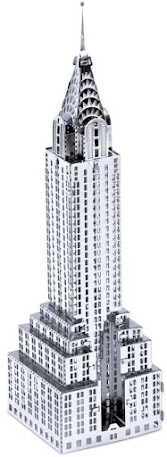Detroit's Village of Delray is all but a memory today, but its namesake Delray Beach is going strong on the east coast of Florida. My wife and I had the pleasure of attending a wedding there just before Christmas. Beyond its name, there is little if any resemblance.
The original Delray area was named Belgrade but known locally as Little Hungary. It was platted (subdivided) in 1836 for small businesses along West Jefferson Avenue and residental streets built off of Jefferson Avenue. The village was renamed "Del Rey" on October 4, 1851, from a suggestion by a Mexican-American War veteran, Augustus D. Burdeno, who remembered the name from a town he encountered while serving in Mexico. The Spanish name was Americanized to "Delray" when the village received its own United States post office on February 8, 1870.
Heavy industry moved into the area along the Detroit River in the late 1890s. The Village of Delray was incorporated in 1897 and annexed into the city of Detroit in 1906. The population peaked at 24,000 in 1930, dominated by Hungarian and Eastern European immigrants. A Wayne County wastewater treatment plant opened in 1940 leading to the destruction of 600 homes.
The village's population dropped by over 4,000 after World War II, due to the G.I. Bill which provided zero-down payment mortgages for veterans. Large numbers of residents moved into the growing Downriver communities of Wyandotte, Lincoln Park, Allen Park, and Taylor. In the late 1950s, the construction of Interstate 75 wiped out even more homes. Delray's master plan was rezoned as exclusively industrial in the late 1960s. The writing was on the wall: Delray's days were numbered.
The final blow to the village was in 2013 when Delray was designated the location for the Gordie Howe International Bridge, resulting in large-scale demolition of many more homes. The bridge project will ultimately revitalize the area with jobs and other commercial businesses on both sides of the Detroit River. The changing times are always toughest on those people displaced by progress or thwarted by unalterable fate.
***
The city of Delray Beach is located on the eastern shore of Florida between Fort Lauderdale and Miami. Despite a rocky beginning, it has become a gentrified, resort town on the Atlantic Ocean with a thriving artist colony. The earliest known inhabitants of the area were Joega and Tequesta Native Americans but little is known about them. In the 1840s, an American military map notes that Seminole Indians had an encampment in the area.
While central Florida was still a tropical wilderness area, the United States Life Saving Service built the Orange Grove House of Refuge in 1876 to rescue and shelter ship-wrecked sailors. There were ten House of Refuges built along the Florida coastline, most on the Atlantic Ocean. The stations were of similar design. The main floor had five rooms where the station master lived with his family. The second story attic was outfitted with twenty cots and bedding for sailors who washed up on shore alive.
Each station had a brick cistern to collect rainwater from the roof for fresh drinking water. A fully-equipped station was stocked with enough dried and salted provisions to feed twenty men for ten days. Each station provided some basic medicine and first aid supplies, and there were wooden boxes filled with books to help sailors pass the time until they could be rescued.
In 1895, William S. Linton, a Republican Congressman from Saginaw, Michigan, and his friend David Swinton, bought a large tract of land west of the Orange Grove House of Refuge as an investment opportunity. They hoped it would become a prosperous farming community. Michigan Representive Linton named the settlement after himself. He and his partner recruited eight settlers and their families from Michigan to clear the land and grow crops.
A year later in 1896, Henry Flagler extended his Florida East Coast Railroad to Miami through Linton and established a train station there. Overextended on their land purchase, Linton and Swinton sold some of their holdings to Major Nathan Smith Boynton to raise money. Two years later, the settlement was struck by a hard freeze, the crops failed, and Linton and Swinton defaulted on the land.
Creditors moved to collect money from the settlers. Some moved on while others fought to hang onto their land. In 1898, W.W. Blackmer, one of the original settlers, suggested that the settlement's name be changed to his Michigan hometown Delray because of the bad publicity Linton's default created. In 1901, the name was changed. The following year, Delray was chartered as an incorporated town.
A Florida land rush in the 1920s brought prosperity to Delray. Tourism and real estate speculation became the economic anchors for the area. Water and sewer lines were installed, and the streets and sidewalks were paved. In 1927, Delray and Delray Beach merged to become the city of Delray Beach. Throughout the 1930s and 1940s, Delray Beach became a seasonal artist and writers' colony and gained fame as a resort town.
By the 2000s, Delray Beach underwent large-scale renovation and gentification along Atlantic Avenue, becoming known for its beachfront, nightlife, dining, shopping, art galleries, and luxury hotels. Delray Beach began hosting international tennis events in 2004 like the Davis Cup and the 2005 Federation Cup, which attracted tennis athletes like Serena and Venus Williams, to make their homes in the area.
Delray Beach is a lovely coastal area in fair weather, but beyond the horizon line in the Southern reaches of the Atlantic Ocean, hurricanes are born. Everyplace has its hazards. Best to have an evacuation plan, fresh water, and a bugout bag ready to go.






































